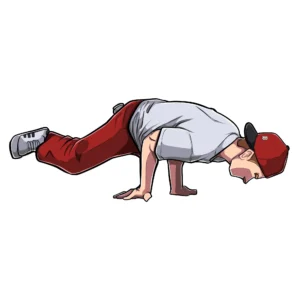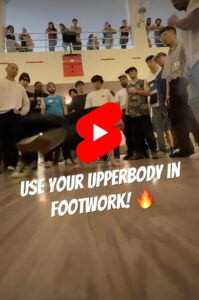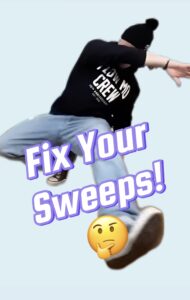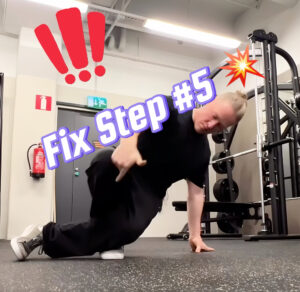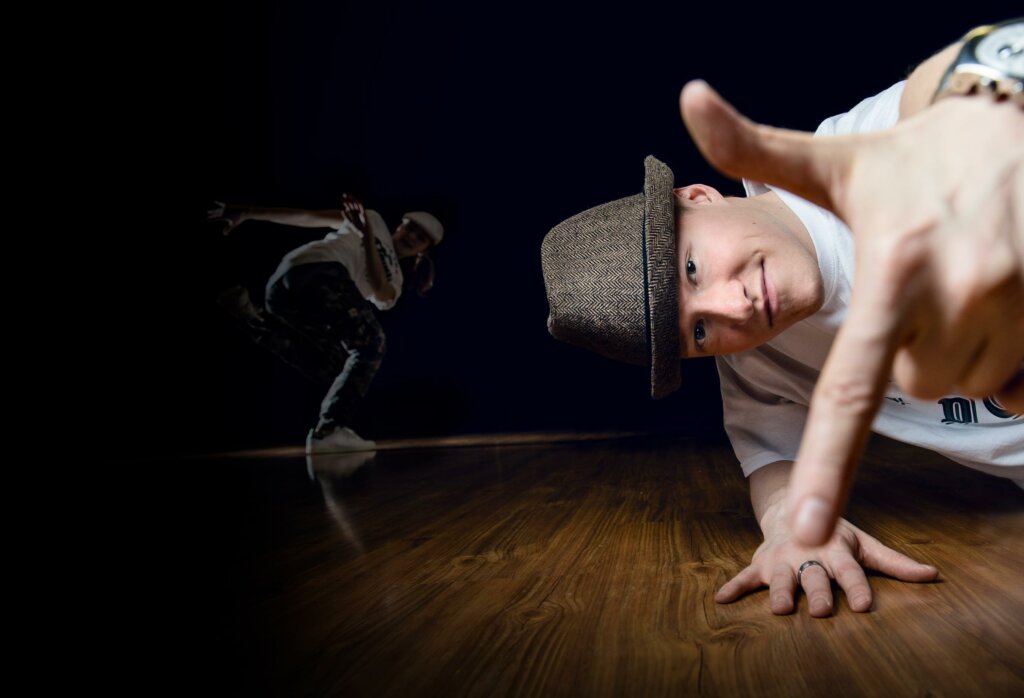Are you looking for a new way to express yourself and don’t know where to start?
Breaking is as deep as it is popular, with countless breakdance moves, variations, and styles to adopt. For newbies learning how to breakdance, attempting to figure out where to begin can be confusing.
Here are five simple moves to start practicing today to help you learn how to breakdance for beginners.
5 Best Beginner-Friendly Breakdance Moves
Dancing isn’t just great for your mind but also your body. In one study, dancing in the morning burned an extra 400 calories per week.
Breaking is especially effective at strengthening your mind and body due to its high-intensity nature. But before learning how to airflare, you must master your foundation. Here are five breakdance moves that are perfect for beginners.
1. The Salsa Step
Practically all breaking routines begin on your feet with what’s known as top rock. The kick step is one of the most basic moves every breaker learns when they’re getting into the scene for the first time.
Learning the salsa step is a simple yet effective move that can be incorporated into some of the main styles of footwork. Essentially, it’s nothing more than kicking one leg forward while stepping to the side with the other.
Despite its simplicity, you can also level up your breaking skills by alternating between legs and incorporating arm movements to improve your balance and style. Ideally, this should be one of your most practiced moves to get you attuned to the rhythm and flow of breaking.
2. 6-Step
With the basics of the kick step mastered, it’s time to move into another foundational breaking move known as the 6-step. This foundational footwork move can be used to improve your moves and reinforce the perfect b-boy form.
Here’s how to do it:
- Start in a squatting position.
- Move your right foot to the front.
- Simultaneously, kick your left leg back.
- Bring your right foot back into a back position.
- Move your left foot in front.
- Step your right leg under your body, then return to the squat position with the left.
The 6-step isn’t just an effective way to transition between the moves in your routine. It’s also a great way to warm up at the start of a session as part of the perfect practice formula.
If you feel you’ve mastered the 6-step, throw in some variations, such as doing it in the other direction.
3. The Headstand
The headstand is what many think about when they look at the top 10 b-boys. These moves are designed to wow a crowd and demonstrate the dancer’s athleticism. As a beginner, expect to use core and arm strength to pull this off.
Note that you shouldn’t try this move on a hard surface. Use either a dance mat or a padded floor to practice this move. After all, there’s a reason why more than one in five injuries are related to the neck.
Start on your knees with your hands on the ground shoulder-width apart. Position the crown of your head between them so you form a triangle with your head and hands before lifting your hips and into the headstand position with a little push.
Repeat the process of getting into the headstand and holding it for as long as possible as you practice at home. Try using a wall if you’re finding it hard to catch your balance so that you don’t injure yourself. You can also try doing it against a wall and shifting away from it as you grow in confidence.
Once you learn the headstand, you can move on to more complex moves, such as how to do a headspin.
4. Backspin
The backspin is one of the oldest breaking moves, having emerged on the streets and dance floors of New York City in the 1970s. As part of breaking out of the Bronx, Jo-Jo, one of the legends of breaking, created this deceptively simple move.
The backspin is one of the best powermoves to start with because it doesn’t require the same level of athleticism, meaning you don’t need to be especially strong to pull off this move.
If you’re looking to add this powermove to your arsenal, begin by sitting on the floor. Lay on your back and tuck your knees into your chest. While kicking your legs out, push off with your arms to rotate on your upper back.
Once you’ve got your spin on, flip your moves and keep the spin going for as long as possible. Plus, you can also try transitioning into and out of it with other moves.
5. Simple Freeze
Freezes are a core part of breaking, showing off the dancer’s skill and original style. Bringing yourself to a complete halt and striking a pose or position is challenging, especially in constant motion.
Like learning how to windmill, adding a basic freeze or two can incorporate some special sauce into your routine.
The simple freeze is one of the easiest breakdance moves for beginners to try. Follow these steps to complete the crab freeze:
- Sit down on the floor with your feet flat and knees bent.
- Place your hands behind you. Ensure that your fingers are pointed away from your torso.
- Lift your hips off the ground and extend your arms and legs.
- Use your hands and feet to balance yourself.
- Hold the “table” position as stably as possible.
Again, you’ll need good core and arm strength to pull this off. The key to longevity in breaking is to listen to your body and move gradually. Too many beginners tend to try to force breakdance moves like the crab freeze only to injure themselves.
Conclusion
Breaking is a physically demanding style of dance requiring focus and expert instruction to master. Although plenty of tutorials exist for practicing your breaking at home, nothing is more valuable than working with an experienced tutor who can give you pointers and show you the secrets of the sub-genre.
At B-Boy & B-Girl Dojo, we bring together knowledge from across the breaking world to introduce beginners to the sport and show some advanced breakers new tricks.
For the best courses online, check out the breaking dojo today.


